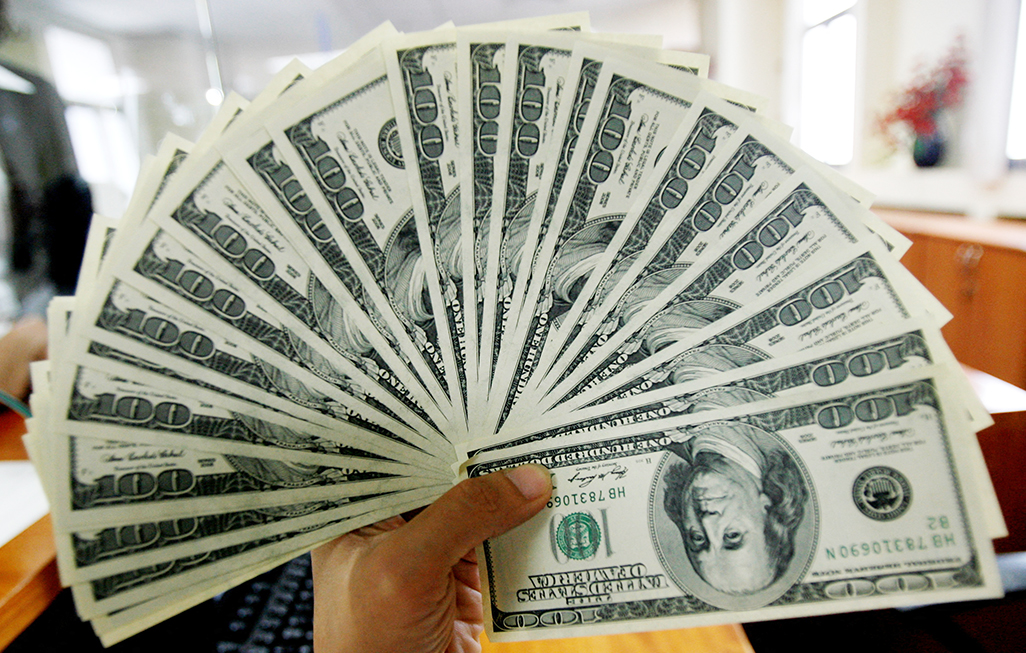Writing an opinion piece makes you realise that actual change does not come about from well-meaning people analysing problems and coming up with good ideas.
Change, rather, is usually the aftereffect of significant events taking place, where action becomes unavoidable from the upheaval that the event itself has brought about. Wars are such cases for example.
As the end of World War 2 was approaching, it became evident that the world had to develop a system for better co-operation among nations.
The financial infrastructure that was built at the Bretton Woods conference in 1944 was one of the outcomes of that effort. The World Bank, the IMF, and the precursor to the World Trade Organisation, the General agreement on Trade and Tariffs (GATT), which was agreed in 1946, were the institutional triad which formed the cornerstone of the trading system between nations for the past 80 years.
Part of that first arrangement, was the system of managed exchange rates which lasted until 1971 when the US stopped the dollar’s convertibility to gold at the $35 rate. (Fun fact, gold hit $3.500 an ounce a few days ago. Math lovers may enjoy calculating the implied annual inflation from there).
The 1970s that followed, were a period of severe economic uncertainty, extremely high inflation, and low growth that tested the soundness of the system in place.
The institutional framework however, withstood the test, and the changes that came about ushering the system of flexible exchange rates, supported, and even strengthened the supremacy of the dollar which acted as the world’s reserve currency.
President Trump now has put that infrastructure into question. The chaos that has set in since ‘liberation day,’ despite being put on ‘pause,’ may act again as a catalyst to momentous change.
At Bretton Woods, two key figures were the ones who drove the process. John Maynard Keynes, on behalf of the UK, and Harry Dexter White, on behalf of the USA. White’s insistence to ensure the supremacy of the dollar, against Keynes’ vision of a more collaborative effort in world economic affairs, (he suggested the creation of a world reserve currency, the bancor among other suggestions), won the day.
The status of the dollar is now under close examination. Irrespective to what is happening in the stock market, long term US$ Treasury yields have been rising (meaning bond prices are falling, as yields move inversely to prices), showing that bond investors are abandoning the US Treasury market. In a period where US interest rate yields are rising, compared to a decline in euro rates, the dollar should have been gaining strength not declining in value.
The fall of the dollar is similar in nature to the 1971 post Nixon announcement about the end of the dollar’s convertibility to gold. At the time, US Treasury Secretary John Connolly famously said at a European economic conference” “Our dollar, your problem.”
Although the quote drove the point home to anxious Europeans it was not actually, correct. The US did not escape the turmoil of the 1970’s stagflation and had to endure a severe recession (dragging the world along with it) in the early 1980s as the price to bring inflation back under control. (‘Our dollar, your problem’ by the way, is the title of famous economist Keneth Rogoff’s new book, for anyone interested)
President Trump’s policies are evaporating the trust in the US that was the foundation of the dollar’s hegemony.
Even though he reversed his threat (after intense pressure from some of his advisors) that he was in fact able to fire Federal Reserve chairman Jonathan Powell because he did not lower interest rates, the damage to the dollar’s credibility has been done.
Some commentators, however, discount this argument, saying that no other currency can take over the role of the dollar. They may be right that neither the Chinese yuan, the euro, the yen, or the Swiss franc can act as the world’s reserve currency. And yet, ideas that have been long dormant are coming out of the woodwork and may yet prove the ‘go to’ solution that the world needs.
In September 2019, Mark Carney, Canada’s present and likely future prime minister, was giving his farewell speech as the then Bank of England governor at the annual Jackson Hole meeting of Central Bank officials. He analysed the problems facing the International Monetary Financial System (IMFS) and his long-term solution was a new Synthetic Hegemonic Currency (SHC) building on the blocks of the IMF’s existing Special Drawing Rights (SDR).
His suggestion was of course, one more opinion among many, for being acted upon at the time. Current developments, however, may yet breathe life back into these ideas.
Carney himself in one of his recent election campaign speeches said that Trump’s tariffs showed that the US was unwilling to lead the world. Canada, he interjected, was willing to do so. At the time, I was not quite sure what he meant. Maybe this is what he had in mind.
History has sometimes a very ironic twist in how things unfold. Five months after Nixon’s historic 1971 announcement, Nixon visited China ending the decades-long isolation of that country. The result of that visit put China on the path it is now, an antagonist to the US, and likely leading to change the economic order Nixon introduced.
Similarly, after all these years, Keynes’ original 1944 vision may yet make a comeback, and ‘liberation day’ will prove the day that the world got rid of the dollar’s hegemony.







Click here to change your cookie preferences